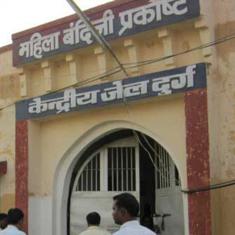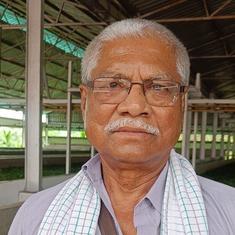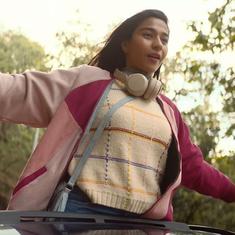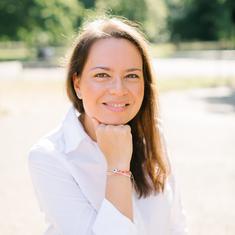In an era when content rules, the impulse to expand access to creative works is an idea whose time has been around for at least 20 years. It is hard to even imagine today’s maker culture of re-mix and re-use in a proprietary world dominated by copyright.
Early on in 2001, when the Creative Commons (CC/cc) organisation was founded by Lawrence Lessig as a United States-based charity to legally adopt creative licences across jurisdictions, it was a measure of reform to copyright legislation intended to build a healthy digital commons.
The idea was a simple but powerful one: in an age of innovation, creativity thrives through an expansion of access. Just as the copyleft movement sought to allow for the free distribution of intellectual property, creative commons licences arrived in time for a digital era when such re-authorisation was necessary.
In the wake of these legal solutions, the Free and open-source software, Open Educational Resources and Open access movements have soared. Thus far over two billion works are attributed with a Creative Commons licence and the global network allows the discovery of images, audio, video and academic works across platforms (Flickr, Wikipedia, Internet Archive, Soundcloud and YouTube) to enable re-use and collaboration. (Just this year, around 500 million images were unleashed in the open domain when Wordpress took on the Creative Commons repository of 500 million free to use images).
Today, the Creative Commons Global Network is spread over 60 countries and is served by a community of advocates, activists, scholars, artists and users working to strengthen the digital commons across languages and borders. Underwritten by a belief in the collaborative power of the internet, 2021 marks the 20th year anniversary of the Creative Commons and its Global Summit was held from September 20 to September 24.
An equitable internet
The virtual summit’s emphasis on collaboration across institutions and stakeholders essentially asked the stark question that follows from a two-decade journey that has seen the rise of big tech and digital transformation: how do we build a better internet? And yes in a global pandemic, better basically means more equitable.
The internet so far has proven to be an unequal space of differential access and asymmetric representation. The global pandemic of Covid-19 has demonstrated the dire need for the free flow of reliable information and connectivity. For digital education and a vibrant public sphere, one of the ways that open access can be usefully magnified is in the realm of digital cultural heritage.
To relay an understanding of the value of open resources, the summit’s invitation to enable new ways of (re)using cultural digital materials is the HACK4Open GLAM initiative. The GLAM sector (galleries, libraries, archives and museums) has been transformed by the digital revolution.
"A single goal unites Creative Commons’ current and future projects: to build a layer of reasonable, flexible copyright in the face of increasingly restrictive default rules."
— Creative Commons (@creativecommons) October 5, 2021
A great read 📄 on the birth & rise of CC on @WalledCulture ➡️ https://t.co/6v4oKzjEYo pic.twitter.com/awDDaVUJe7
Through the summit, an open call and a dashboard featuring new ideas for how to open up archival resources provide a common platform for sharing resources. By creating a dashboard that includes projects from around the world, a global conversation generates a common pool of ideas to extend the impact of open digital cultural heritage.
In India, where access to museums and art institutions was limited and physical spaces are their own barrier to entry, the emphasis on Open GLAM allows for previously unpublicised collections to be viewed (and re-mixed for new uses). The “unleashing” of these digital materials enables a public engagement with the arts and education of reusing open digital cultural resources.
But the promotion of Open GLAM and resources in India has added challenges when attempting digitisation across languages and scripts. Efforts by Subashish Panigrahi who founded the OpenSpeaks initiative to build frameworks and resources for documenting endangered and indigenous languages is one such step in a desirable direction.
A lot more is needed as is evidenced in Wikimedia foundation’s report “Lessons we learned from cultural institutions and libraries that went open access in 2020-2021.”
This report details that in the past year, we saw the Smithsonian release 2.8 million 2D and 3D images into the public domain shortly before the pandemic in their Open Access initiative. Meanwhile in India, DAG “contributed 13 artworks” – some of which have been remixed by the heritage lab for public availability.
Searchable databases
The problem of how to unleash archival materials has now become an opportunity for galleries, libraries, archives and museums to adapt to digital audiences. Efforts through mhzfoundation.org and curationist.org have enabled a searchable database of Creative Commons, Open Access and public domain content to drive an open knowledge ecosystem, designed for curating and sharing global art and culture.
Curators from across the galleries, libraries, archives and museums provide context around images, videos, and/or cultural content pieces, available in the Creative Commons and public domain.
Just as the transition of scholarship has seen a demand for unleashing academic access – especially for research that is publicly funded so as to offer visibility that would multiply the reach of scholarly communities – so too does the application of FAIR (Findability, Accessibility, Interoperability, and Reuse) principles and CC licencing promote exchange, access, interoperability and reuse of data across repositories.
Galleries, libraries, archives and museums’ public interest mission, rooted in the imperative to make cultural heritage collections available aligns with the open-access ethos. Indeed, making galleries, libraries, archives and museums collections shareable, and reusable is the best way to reach out to newer publics as digital collections are made available online. In this regard, Wikisource, a project related to Wikipedia, is primarily used to transcribe public domain texts as well as relicensed works.
💫 OPEN CALL FOR OPEN GLAM CASE STUDIES 💫
— Creative Commons (@creativecommons) October 5, 2021
Building on the success of the Creative Commons Open GLAM Platform, we are pleased to announce the launch of the Open Call for Case Studies on Open GLAM.
▶️ APPLY: https://t.co/87snSgd1Im
▶️ More Info: https://t.co/5NG90ze0BS pic.twitter.com/7tWhctZQ4D
As a collaborative library, it exists in 70+ languages and serves infrastructural needs for several marginalised language communities. Big institutions such as the Nordic Museum in Sweden, the National Library of Scotland and The British Library have also applied their collections to use MediaWiki software as have generous musicians and artists who have offered up their works freely to the digital commons.
While it is clear that openness affords collaboration and hence innovation, we are also living through a time when the Big Tech 5, notorious for violations of privacy and antitrust concerns, dominate the digital world. So it is even more heartening that of the five most visited sites in the world, at least one does not belong to the proprietary tech giant group – the “love it or hate it” site Wikipedia.
The Wikimedia Foundation is also not coincidentally in its 20th year, as Wiki’s freedoms are enabled by licensing through the Creative Commons Attribution system. Since 2009, all Wikipedia content, in every language, has been published under CC license. Wikis might qualify as one of the most open spaces on the internet –where users are allowed equal participation to freely edit the knowledge database.
Twenty years into their founding, Wikimedia and creative commons experiments in copyleft education, and the generous reciprocity needed to build a digital commons are facing real challenges. In reflecting on the “openness” of the internet, occasioned by both anniversaries and a pandemic, Wikimedians (and founders of Open Future) Paul Keller and Alek Tarkowski are calling out the “Paradox of Open”.
At a crossroads
At the summit, they declared that we are at a crossroads where the contributions of the open community can no longer be assumed in perpetuity without any giveback. Creating a digital commons is a collective responsibility that has often hidden the costs of labour rendered by everyday contributors.
In examining the relationship of proprietary ownership in an environment of sharing and reciprocity, there is a real need to reflect on ways to a better internet and the summit saw spirited exchanges across party lines. The clarion call for such re-thinking is ephemerally inscribed in an open doc initiated by Google’s Director of Information Policy Derek Slater and in the true spirit of a digital commons, all are invited to comment. May the edits never stop.
To know more about the “Campaign for a Better Internet”, sign up here.
Maya Dodd teaches in the Department of Humanities at FLAME University in India and served in the 2021 CC Global Summit Program Committees.










